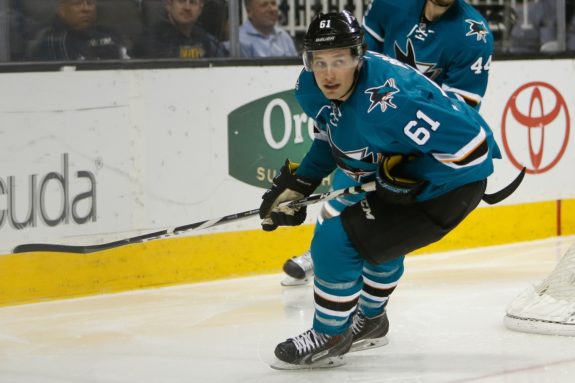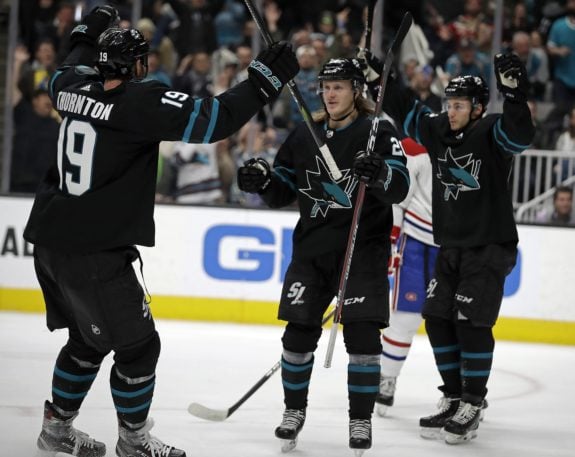For the second time this week the Philadelphia Flyers have made a trade for a veteran defenseman, this time for long-time San Jose Shark, Justin Braun. The Flyers shipped out a 2019 second-round pick along with a third-rounder in 2020 to acquire him. General manager Chuck Fletcher has kept his promise to be aggressive this offseason, and this trade doesn’t look like it will be his last move.
Why the Flyers Made the Trade
You can essentially take all the reasons the Flyers made the deal to acquire Matt Niskanen from the Washington Capitals and apply it to their rationale for acquiring Braun. With a defensive corp flocked with young, left-handed mobile defensemen, the roster had a need for veteran right-handers to fill big roles and help mentor the youngsters.

In Braun, the Sharks have added an additional 691 games of experience across regular season and postseason play. He’s also 32 years old, potentially on the decline, and has a knack for denying zone entries, eerily similar to Niskanen. Don’t expect Braun to rack up the points either, he’s more of a defensive defenseman.
After the Niskanen trade, it’s unclear where Braun fits into the lineup. Fletcher has already expressed his confidence in Philippe Myers, stating that the Flyers are “bullish” on his upside and hope he can fill Gudas’ old role, which rules out Braun from playing the right side on the third pair.
The most likely scenario at this point, is that another defenseman gets shipped out in the near future, with Shayne Gostisbehere, Robert Hagg, and Sam Morin as the likely candidates. Gostisbehere would fetch the best return, but Hagg should be the player they’re most inclined to move.
Related: Breaking Down the Flyers’ Trade for Matt Niskanen
Why the Sharks Made the Move
Fresh off handing pending UFA Erik Karlsson an eight-year, $92 million mega-deal, and with deals expected for UFAs Joe Pavelski, Joe Thornton, Gustav Nyquist and RFAs Kevin Labanc and Timo Meier, the Sharks needed to free up as much cap space as they could.

By offloading Braun, they clear up $3.8 million in cap space for the upcoming season. For a team that has been contending as long as the Sharks, draft capital is hard to come by, so the second and third-round picks are a great return considering their main objective is to free up space.
Trends Starting to Form
It’s only two trades, but there appears to be a trend in Fletcher’s plan thus far, both on-ice tactically as well as in the teams he’s targeting. Based on the players acquired, Fletcher seems to believe that the Flyers ceded their blue line to opponents too easily. Both Niskanen and Braun’s biggest strengths are to prevent zone entries and add mobility, which would make Hagg the most likely player to be on the chopping block.
As far as the teams Fletcher is targeting, both the Sharks and Capitals are long-time contenders caught in a cap crunch and have to move players they don’t really want to move: Niskanen was one of the most liked players in the locker room in Washington and played a huge role in winning the Stanley Cup in 2018; Braun was a 12-year veteran in San Jose drafted by the team in 2007.
Justin has been an important part of our organization since we drafted him in 2007 and over that time, we have seen him develop not only as a player on the ice but as a man. He has played a large role in our team’s success since joining the Sharks roster, including appearing in three Conference Finals and competing for the Stanley Cup in 2016. I want to thank Justin and his wife, Jessie, for their commitment to the Sharks organization and wish them all the best in their future.
Sharks general manager Doug Wilson
In a world without a salary cap, it’s easy to imagine these players staying put. Alas, that’s not the world we live in and tough decisions have to be made when money is involved. Fletcher and the Flyers seem to be the willing beneficiary of those teams’ misfortunes.